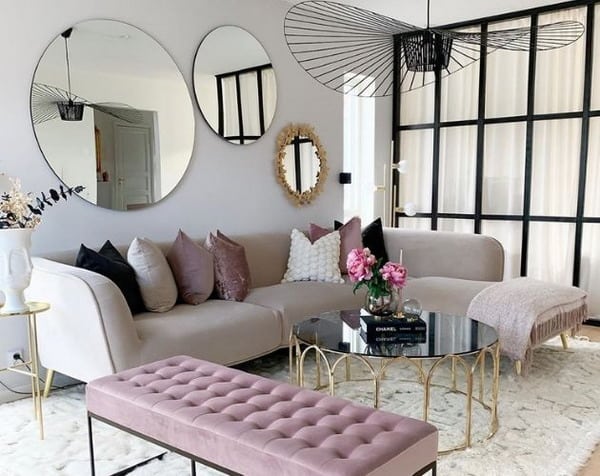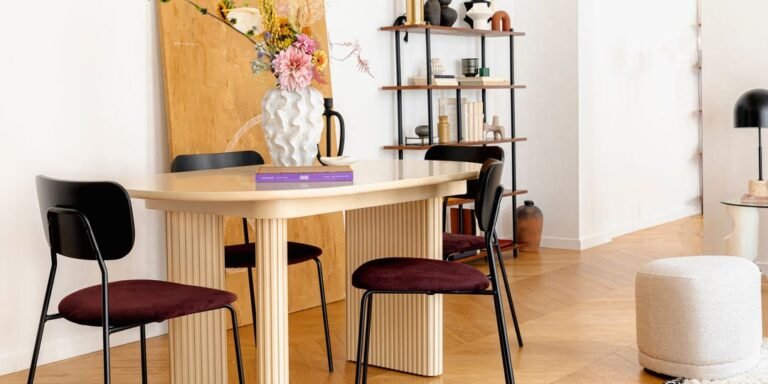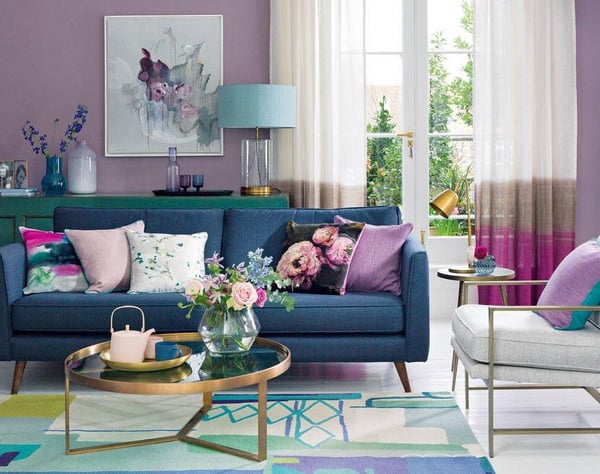Furnishing sewing rooms with sideboards, secretary and co.
When robust tables, various fabrics and buttons come together in drawers, then you have arrived in your personal creative dream! We will give you tips on how to set up a sewing room in this article. In addition to a cutting and sewing table, there are also one or the other Sideboard as well as a chic secretary wonderful options that will add functionality, charm and character to the sewing room.
A place for sewing: sewing machine, table and chair
Of course, if you want to set up a sewing room, you first and foremost need a large, stable table on which the sewing machine and sewing utensils can be placed and also blanks can be made. Depending on the space, this can be a large sewing table on which you can do both, or two tables: one for the sewing machine and one for cutting. If there is enough space, an extra cutting table or a converted large dining table is definitely worth considering when setting up the sewing room: the table should offer a large work surface on which it is convenient to cut and iron.
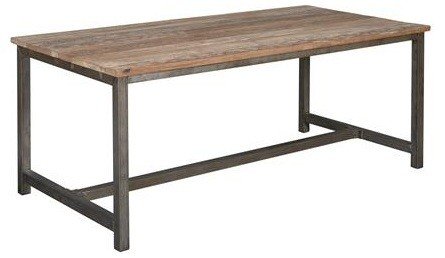
If you like to work standing up, you should get a height-adjustable cutting table for this. Otherwise, of course, a comfortable chair is also a must. A simple wooden chair such as the one in the kitchen or dining room or a desk chair is suitable here.
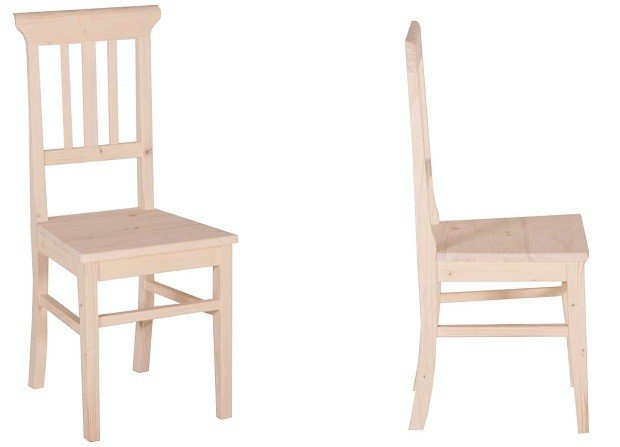
In addition to a large table for sewing and tailoring, a secretary is also a good idea for the sewing room. In addition to a small work surface that is suitable for planning and recording new ideas, it also offers many drawers and compartments that are suitable for storing sewing patterns, pens and other sewing utensils, for example.
Furnishing a sewing room: lighting and cables
In order to be able to sew well, you should also think about optimal lighting when setting up. Without good lighting, it’s hard to work accurately and well. In addition to a ceiling lamp or floor lamps that provide good basic lighting, other light sources are needed that provide enough light at the cutting table, at the secretary and the sewing machine. Above all, it is important that you do not cast a shadow on yourself that interferes with sewing. In addition to spots, additional desk and work lights are ideal and should be planned accordingly when setting up the sewing room.
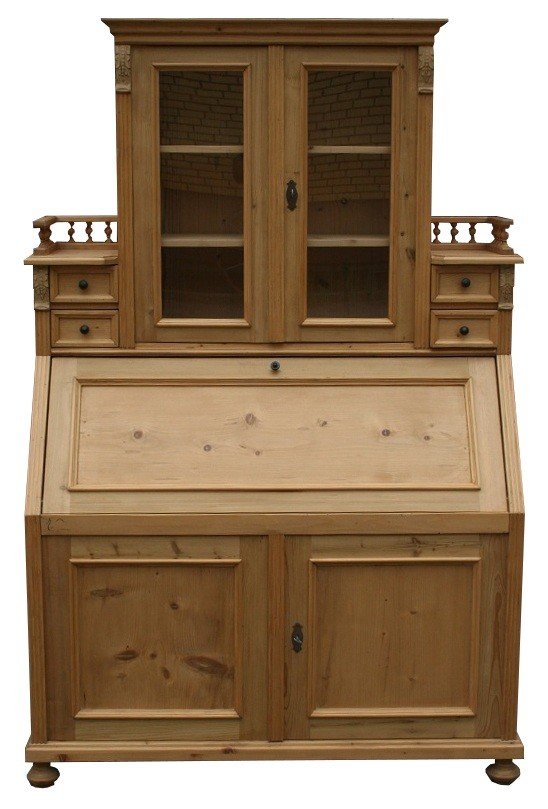
Another important topic that is often neglected when setting up is cables. Since there are some electrical appliances in the sewing room – an iron, a sewing machine and table lamps – there are also a lot of cables that can quickly make for a messy overall impression. Cables, if they were laid carelessly or only loosely, can also quickly become a stumbling block. To avoid this and to give the room a clean, tidy look, cables should ideally be put together in bundles and secured with cable ties. Ideally, you hide cables in cable ducts under the sewing table or run them unobtrusively along the wall.
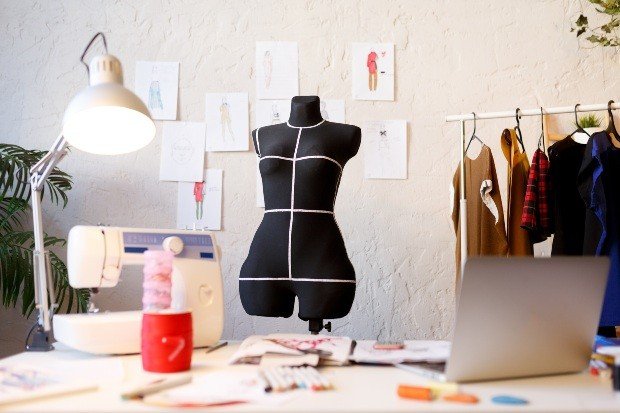
Order in the sewing room: a wardrobe and a sideboard will help
In order to store fabrics, yarns and other sewing utensils effectively and neatly, sideboards are also suitable in addition to cabinets. Especially sewing instructions, sewing patterns and also started sewing projects as well as fabrics need space. A good order system is worth its weight in gold here. For example, hanging registers are a great idea for storing sewing patterns and instructions in such a way that you can quickly find what you are looking for with the right lettering. In a closet, however, you could also work with hangers, for example, to which you attach sewing patterns or unfinished projects or templates with clamps. While a cabinet has the advantage that it offers a lot of storage space, a sideboard scores with an additional storage area that can be used both for storage and for decoration. Because, of course, a sewing room should not only be practical, but should also be a place of well-being. Beautiful plants, picture frames or even self-made decorative pieces are beautiful additions that fill a room with life and character.
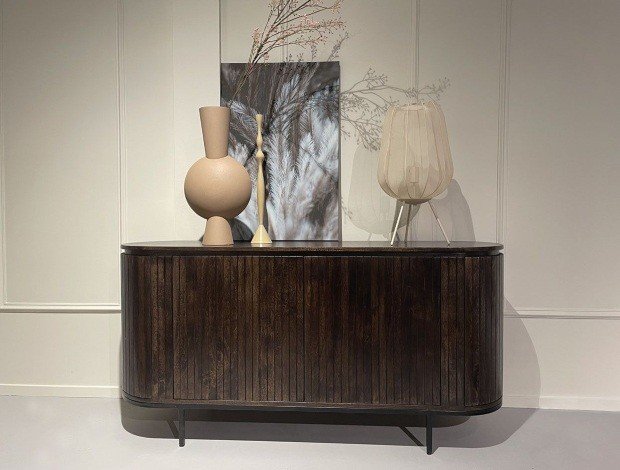
Since you have both large things like fabrics, as well as very small things when sewing, a sideboard with compartments and drawers of different sizes is a good option. In order to be able to store particularly small things such as buttons, yarns or staples clearly arranged, transparent boxes in different sizes are attached. It is best if you label the boxes: so you never have to search for a long time and always have everything at hand. But also inserts for drawers such as cutlery boxes or boxes and boxes help to keep order and keep an overview. Small magnetic trays or cans are recommended for small metal parts such as sewing, insertion and safety pins.

Furnishing a sewing room: shelves and pegboards
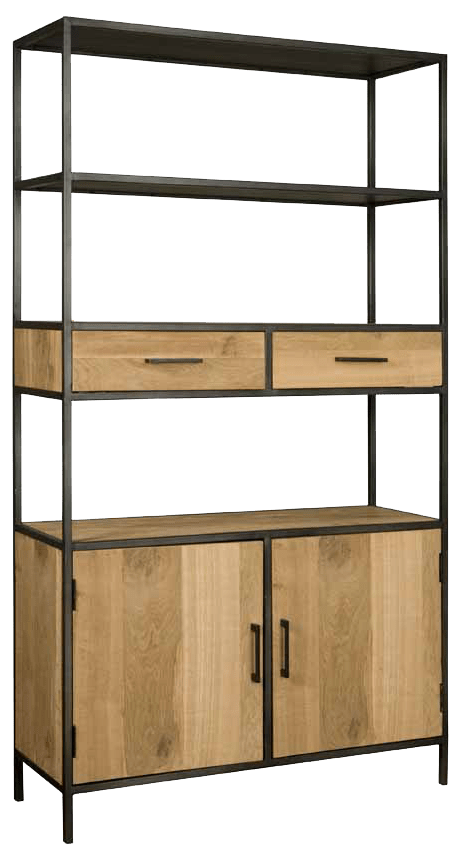
If you always want to keep an eye on your sewing utensils such as scissors, measuring tapes and also various yarns or wool, pegboards and small shelves are perfect for furnishing sewing rooms. A pegboard is a plug-in or perforated wall consisting of a board mounted on the wall, which is provided with holes. Rods or hooks can be inserted into the holes, on which scissors, rotary cutters or other sewing utensils and materials can be hung directly. Such a pegboard can be bought from wood or metal, depending on your taste, or you can also make it yourself.
Shelves are also perfect for having everything you need to work within easy reach. Boxes and boxes, but also the houseplants or other decorative things will find space on such shelves. So everything looks not only orderly, but also beautiful.




